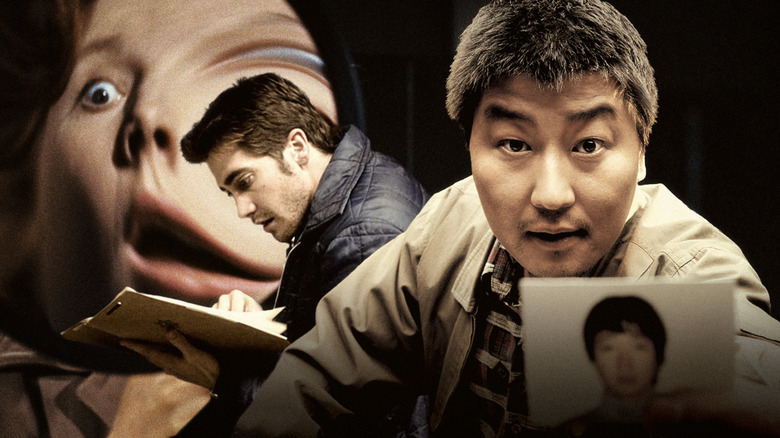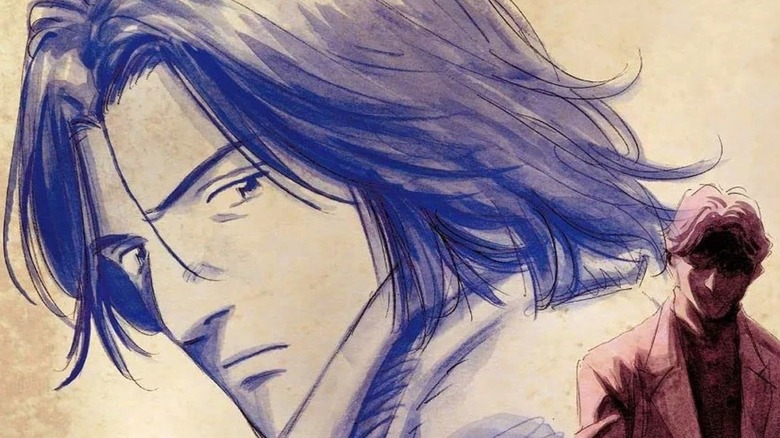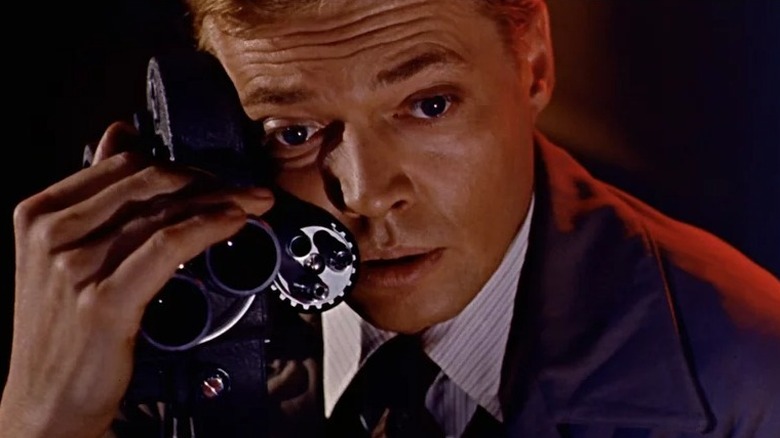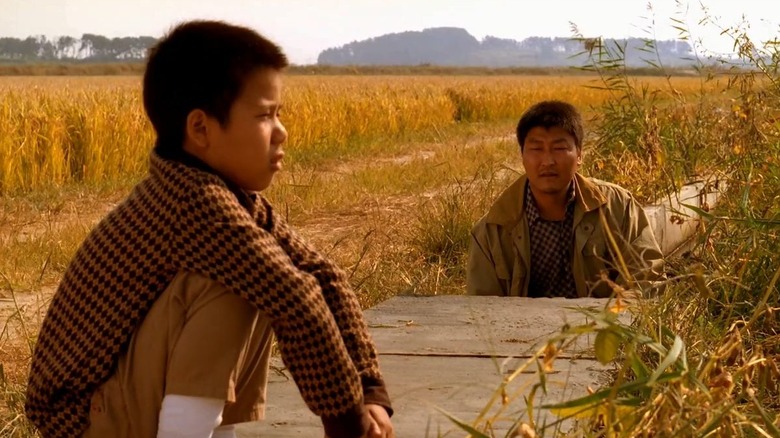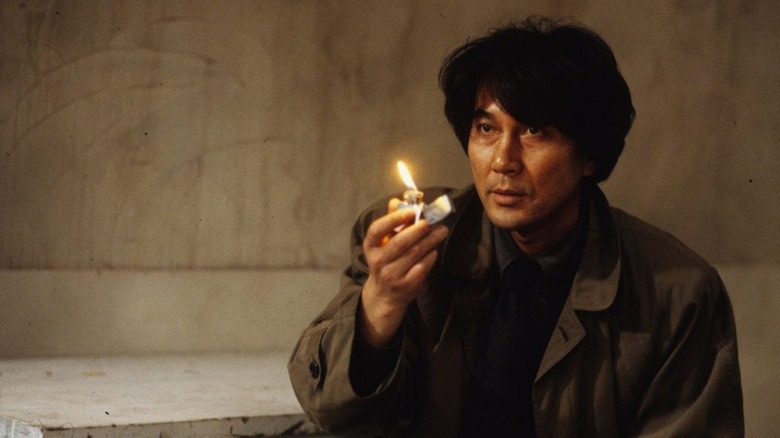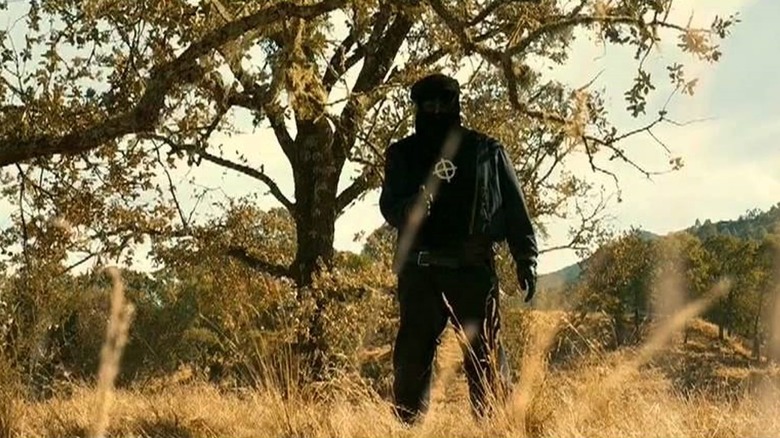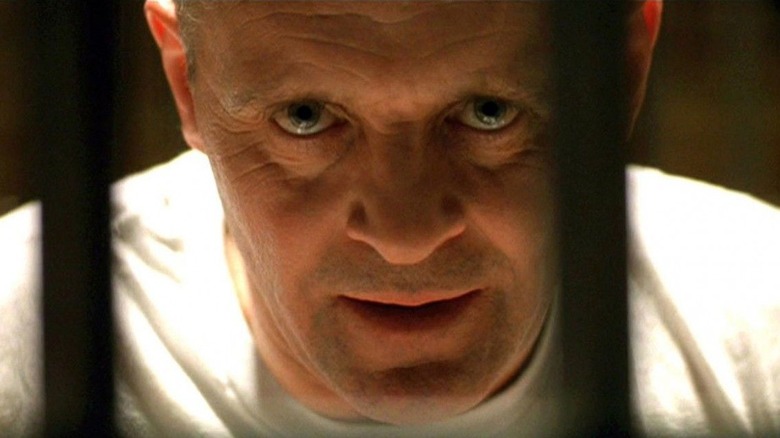The 5 Scariest Serial Killer Movies, Ranked
Horror picture "Longlegs" is proving to be a surprising box office success. A lot of credit must go to indie studio Neon's marketing campaign, which was scary enough to get people paying attention, yet restrained enough to not give the whole movie away.
Starring Maika Monroe as FBI Agent Lee Harker, "Longlegs" follows the hunt for a serial killer, played by a well-disguised Nicolas Cage. Cage's killer character is mercifully kept at a distance or off-screen for most of the movie; the rare times we get an up-close look, it's like we're intruding on something devilish.
Director Osgood Perkins' previous films have felt a bit too empty for me. ("Gretel & Hansel" had an eye-popping style that mixed woodland fantasy with the ostentatious colors of a Giallo picture ... and a story too thin for 30 minutes, let alone 90.) The procedural core of "Longlegs," though, gives the movie enough of a skeleton that I could appreciate Perkins' craftsmanship without it trying my patience. Is "Longlegs" the scariest movie ever? No, but it is the movie equivalent of a page-turner, with style that keeps you dreading what comes next instead of hungering for it.
Perkins is the son of Anthony Perkins, who played Norman Bates in "Psycho." The son making a movie in the vein of his father's most famous role sure is a full-circle move. The serial killer is a screen archetype with a long cinematic family tree, stretching back to Peter Lorre in Fritz Lang's "M" and Robert Mitchum in "The Night of the Hunter." The slasher film, from "Halloween" to "A Nightmare on Elm Street," is a close cousin that also shows the public's fascination with the darkest of human hearts. Here are five of the scariest serial killer films ever made (plus a little something extra).
Bonus: Monster
Ok, cheating a bit here, but Naoki Urasawa's "Monster" (first made as a manga, then an anime) is one of my favorite serial killer stories ever. It hasn't been made into a movie or live-action TV series yet (despite Guillermo del Toro's efforts) so I'll give it only an honorable mention.
Set in 1990s Germany, "Monster" is modeled on "The Fugitive" — Dr. Kenzo Tenma is hunting his former patient Johan Liebert, a child who grew up into a serial killer years after Tenma saved his life. Tenma's hands have saved many lives, yet when they revived Johan, he unknowingly let evil loose on the world. In order to fulfill his Hippocratic Oath, he believes he must break it just once.
It's a great premise for a thriller series, with both suspense and high-minded questions baked in. "Monster" is a long, twisty series but never milks its story (a downright miracle for a long-running comic series). If you're not an anime fan but do like horror-thriller movies like the ones on this list, "Monster" should be up your alley.
"Longlegs" quotes from the Book of Revelation 13:1-4, a famous passage describing the power of Satan:
"And I saw a beast rise up out of the sea, having seven heads and ten horns, and upon his horns ten crowns, and upon his heads the name of blasphemy. And they worshiped the dragon which gave power unto the beast, and they worshiped the beast, saying, 'Who is like unto the beast? Who is able to make war with him?'"
"Monster" opens with this same passage, promising its viewers a descent into darkness — yet, in the last sentence, there's also some hope that evil can be overcome.
5. Peeping Tom
"Psycho" absolutely holds up — it's my favorite Alfred Hitchcock film. Bernard Herrmann's score is bombastic, but it also worms its way into your ear and keeps you on edge. Hitchcock's mastery of terror means that plenty of moments, from Marion Crane's (Janet Leigh) shower stabbing to the reveal of "Mother's" shriveled skull face, are as chilling today as they were 60 years ago. But if we're talking scariest serial killer movies, I have to give this one to another 1960 classic: Michael Powell's British horror film "Peeping Tom."
The film stars Karlheinz Böhm as Mark, a photographer who murders women with a knife lodged at the end of his film camera, so that he can capture their last moments dead-on. The opening scene depicts one of Mark's kills shot through his camera; the slow-boiling horror on the victim's (Brenda Bruce) face will never leave you.
Like a Hitchcock picture, "Peeping Tom" is about the horror of voyeurism and suggests cinema is an innately exploitative medium. While the black-and-white coloring of "Psycho" keeps the mood ghastly but makes the bursts of violence feel austere, "Peeping Tom" is shot in lurid color. Once panned as an evil film, "Peeping Tom" is now considered a gem (and Martin Scorsese has helped champion it).
4. Memories of Murder
Serial killers sometimes feel like Hollywood magnifying a rarer-than-you'd-think phenomenon. History proves that such cases are not confined to the U.S. though.
Bong Joon-Ho's 2003 "Memories of Murder" is based on the real-life police investigation into South Korea's first recorded serial killer. (Some, including us here at /Film, would argue "Memories" is still Bong's best film, even better than his Oscar heavyweight "Parasite.") "Memories of Murder" is as much a black comedy as a procedural; the cop leads are woefully out of their element and never even get close to nailing a suspect.
What's scarier? Knowing that a killer has a disturbing mask-like face, or having no idea at all which face in the crowd they are at all? "Longlegs" and "Memories of Murder" offer up opposite conclusions.
The final scene of "Memories of Murder" shows former cop Park Doo-Man (Song Kang-Ho) returning to the scene where the first victim was found decades earlier. A little girl passes by and tells him she saw someone else in the same spot weeks ago, reminiscing about something he'd done long ago. Park asks her what he looked like, she says he was ordinary. Park turns and stares right into the camera. It's the most soul-piercing shot I've ever seen, for "Memories of Murder" ends with the notion that the killer is still out there. The ending is a reminder both that this story wasn't a mere movie but a true injustice, and of how well-hidden evil can keep itself.
3. Cure
Many critics are calling "Longlegs" a genre throwback to '90s serial killer thrillers like "The Silence of the Lambs" and "Se7en." It's a well-earned comparison (and I promise we'll touch on those soon) but there's a third film, made outside Hollywood, that one should also see as a "Longlegs" ancestor. That movie is 1997's "Cure," directed by Kiyoshi Kurosawa.
"Cure" follows Japanese detective Kenichi Takabe (Kōji Yakusho) investigating a series of murders. Each one was committed by a different person who had no explanation for what they did, but the crimes share commonalities (such as X symbols carved into the victims' flesh). Takabe discovers there may be a post-hypnotic suggestion at work — and by the film's end, he may have fallen under its spell too. Kurosawa pulled on the tropes of American detective stories for "Cure," but wanted to tell a story where the lead falls into darkness, instead of just being the audience's eyes and ears into the mystery.
Like "Cure," the mystery in "Longlegs" is how killings could be the work of one mastermind who has never directly killed any of the villains. "Longlegs" leans on black magic for its explanation, but "Cure" says all evil is just lying in the human heart and mind.
Osgood Perkins also shares Kurosawa's skill at making your skin crawl; something is just wrong in every shot no matter how innocuous it is. You feel like evil is merely well-hidden, and sometimes if you look closely enough, you'll realize it is. Indeed, "Cure" ends not on a static, definitive final shot but an in-motion medium wide shot of a waitress grabbing a knife. Will the killings continue after the film reel ends? You can only guess.
2. Zodiac
David Fincher has a reputation as a serial killer movie director. It's not the only type of film he makes, but his proper directorial debut (discounting the disowned "Alien 3") was "Se7en," in which two cops hunt a man who kills in the pattern of the seven deadly sins. "Se7en" was, like "Longlegs," a paperback premise without the safety of a tidy ending. Fincher then adapted "The Girl With The Dragon Tattoo," created the TV series "Mindhunter," (about the creation of Behavioral Science Unit at the FBI), and his latest movie (just "The Killer") is about a professional assassin.
Fincher's best serial killer movie (and his best movie in general) is 2007's "Zodiac," chronicling how 1960s Northern California was racked with terror over the Zodiac Killer, who killed at least five (confirmed) victims and sent his journals to the media. The case was never solved and the killer remains a big question mark. So, Fincher and screenwriter James Vanderbilt (adapting from true crime book "Zodiac" by Robert Graysmith, who is played in the film by Jake Gyllenhaal) don't make the Zodiac the film's lead, just its center. The focus is instead placed on how the police and media chased the clues and how the truth slipped through their fingers.
One reason serial killers have become a cinematic fear for Americans is the idea that they live among us, acting like normal suburbanites to cover their true self. When the killer remains in the shadows, that fear goes up. The best scene in "Zodiac" plays on how uncertainty breeds fear when Graysmith walks into a basement with a man who may be the Zodiac killer.
1.The Silence of the Lambs
It can't be anything else. "The Silence of the Lambs" is a perfectly-made movie, with two of the best ever screen performances — Jodie Foster as Clarice Starling and Anthony Hopkins as Hannibal Lecter — pitted against each other. Director Jonathan Demme and director of photography Tak Fujimoto know how to frame each word of their exchanges to underline the developing relationship. Clarice and Hannibal are rarely in the same frame; when one is not speaking, we see the other through the eyes of their scene partner.
Thomas Harris' source novels and their adaptations have always walked the line between gothic horror and police procedural. Dr. Lecter himself is a spin on Dracula, but one who partakes in literal cannibalism rather than sexualized blood-suckling. Demme's "The Silence of the Lambs" spends most of its time on investigative thrills but remembers when to burst with horror (I don't think anyone can forget the image of disemboweled man strung up like an angel).
Does "The Silence of the Lambs" deserve its enduring controversy for giving airtime to transphobic stereotypes? It does. (Killer Jame Gumb, played by Ted Levine, is a murderer who literally wants to wear the skin(s) of women.) The stereotypes are noxious. The craft is eternal and impeccable. I personally can't throw the baby out with the bathwater, but the call is yours.
"Longlegs" has earned many comparisons to "The Silence of the Lambs" and it should be obvious why (both are about a young woman FBI agent hunting a serial killer). Hopkins' Hannibal is the type of devil that can seduce you. Cage's Longlegs is the one that devours your soul once he's snared his prey.
